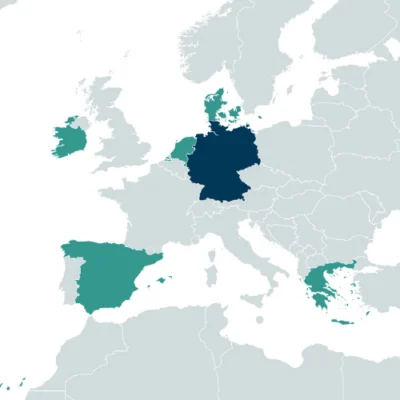
BIOCUE – Microbial biodiversity and Carbon Use Efficiency as Nature Based Solution for soil C stabilization
Call
Duration
01/04/2025 – 31/03/2028
Total grant
Approx. 1.1 mil. €.
More information
Aline Frossard
aline.frossard@wsl.ch
Partners of the project
- Swiss Federal Research Institute WSL, Birmensdorf, Switzerland
- University of Copenhagen, Copenhagen, Denmark
- University of Girona, Girona, Spain
- University of Pretoria, Pretoria, South Africa
- University of Western Cape, Cape Town, South Africa

Context
Understanding how ecosystems’ carbon balance will adapt to global changes and land-use shifts is of major interest for society. Stabilization of organic matter in soil is essential for the Earth’s carbon cycle. However, we still have a lot to learn about how microorganisms help stabilize carbon in the soil. The BIOCUE project aims to explore how NbS —such as efforts to protect, restore, and preserve ecosystems—affect the carbon balance in soil, whether it’s gained or lost. The project focuses on how these efforts influence the diversity and role of microbes in soil carbon stabilization, particularly their Carbon Use Efficiency (CUE), which refers to how effectively microbes use the carbon they take in for growth instead of respiring the carbon as CO2.
Main objectives
The BIOCUE project has three main objectives: (1) to connect the diversity of microbial species and their functions with how efficiently they use carbon (i.e. CUE) in soils managed with NbS, (2) to identify and study key types of microbes that play a major role in stabilizing carbon in soil, and (3) to gather data on microbial diversity and CUE at various scales, to help improve carbon cycling models.
Main activities
The BIOCUE project takes a big-picture approach to understand how soil microbes contribute to carbon storage. It will examine the connection between microbial diversity and CUE across different scales—from entire landscapes (ecosystems) to smaller experimental setups (mesocosms) and even individual microbial cells or groups of microbes. At the landscape level, several NbS case studies, including rewilding, organic farming management, and water management will be used to assess the relationship between soil biodiversity and CUE and to evaluate best NbS actions in terms of CUE and soil carbon stabilization, biodiversity and microbial functions providing key ecosystem services. At the community level, the scientists will perform controlled experiments in mesocosms where they will gradually reduce the diversity of microbes in the soil to test how the diversity of microbes in the soil affects CUE. In a next step, specific microbes that are especially good at using carbon efficiently will be identified based on their genetic capabilities and custom groups of microbes that can work together to improve soil carbon stabilization will be created. Local stakeholders involved in these NbS case studies will be engaged from the start. A citizen science activity will invite private garden owners in Switzerland, Denmark, Spain, and South Africa to take part in rewilding efforts to increase biomass, diversity, and soil ecosystem functioning, in their own garden during the project. This hands-on activity will be a didactic way to disseminate concepts and outcome of the BIOCUE project to a large public.
Soils support key human needs like food production, clean air and water, climate change mitigation and recreational-social activities. Soil biodiversity and functions boost these benefits. BIOCUE’s comprehensive, multiscale approach — combining microbial diversity, CUE, and soil factors across various regions and NbS strategies — tackles the challenge of understanding how ecosystems’ carbon balances will respond to global changes and shifts in land use. The outcome of the BIOCUE project will thus provide help in making land use management decisions as well as generate novel knowledge in global soil biodiversity and function.

